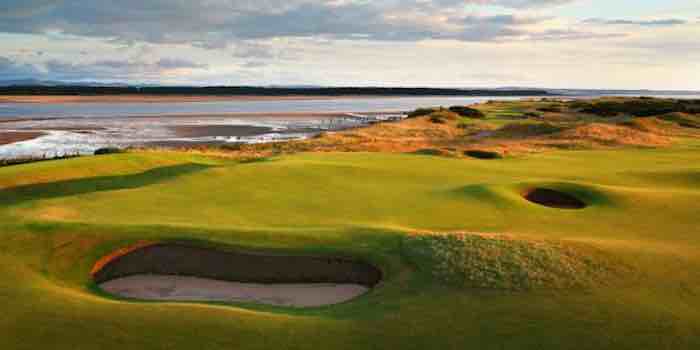By Wes Porter ——Bio and Archives--September 29, 2019
Lifestyles | CFP Comments | Reader Friendly | Subscribe | Email Us

It is played by presidents and prime ministers – wish should warn us about something. Mark Twain regarded it as a good walk ruined. More enthusiastically, on Jerry Lewis’ opinion, “A great golf course is like a beautiful, unattainable woman – full of challenges, surprises, difficulties and delights.”
While used today more broadly, the original links flanked sea-bound coasts. The description is Scots and derives from Old English hlinc, rising ground or a ridge, often coastal sand dunes, although sometimes simply open parkland. And while ever and yon arguments rage over where golf originated – Roman pananica, with a bent stick and stuffed leather ball or the ancient Dutch game of coif, historically modern golf originated in 15th century Scotland. A century later, Stephen Clarke noted that Mary, Queen of Scots, “to go out to the heath and play golf, a game she had loved since her Scottish childhood. She is credited with inventing the term ‘caddy’ – her clubs were carried by the young sons of French noblemen, known as cadets, which is pronounced ‘cadday.’”
Most modern courses occupy 60 hectares (150 acres) of which 30 hectares (74 acres) is maintained turf. Especially when located within cities, as many are – one, in Toronto, eve has its own subway train entrance – they offer extensive greening to an often blighted urban landscape. Plants and trees, arthropods and bees, even mammals all find shelter, undiscouraged by cries of “Fore!”
Outside the tees, fairways and greens, trees, shrubs, wildflowers even the rye grass preferred by for the rough by greenskeepers – who care for far more than the greens – can offer a habitat for a wide selection of wildlife, big and small. Coarse, hard-wearing rye grass is also used for tees and fairways but maintained much shorter.
The Greens themselves are seeded with bent grasses of many types. Penncross is especially favoured as it withstands frequent and low mowing. Much admired as they are, their establishment, care and mowing render them less attractive for home lawn fanciers.
The first golf clubs and courses established in Scotland. Although the oldest course at St. Andrews dates to 1552, the now-standard 18-hole courses dates there to 1764. The sport spread. Following the Napoleonic wars. At Pau, a spa resort in southwest France, Stephen Clarke explained, “The Scots baffled locals with their habit of digging holes in the ground and hitting little white balls at them.” However, he says, “Cricket didn’t have so much luck, probably because it involves throwing a hard ball at the batsman’s testicles, and that is one risk that a Frenchman won’t take.”
In more recent years, many have sought to explain the appeal of golf. William Hobson Andrew, a JP who wrote a column on golf, once summed it up observing: “There is no greater thrill than to drop your balls on a damp green.”
Even those who despise the sport should read P. G. Wodehouse’s 1921 hilarious tongue-in-cheek history The Coming of Gowf, ending in the words: “And so golf came to Oom, and with it prosperity unequalled in the whole history of the land. Everybody was happy. There was no more unemployment. Crime ceased. The chronicler repeatedly refers to it in his memoirs as the Golden Age.”
View Comments
Wes Porter is a horticultural consultant and writer based in Toronto. Wes has over 40 years of experience in both temperate and tropical horticulture from three continents.